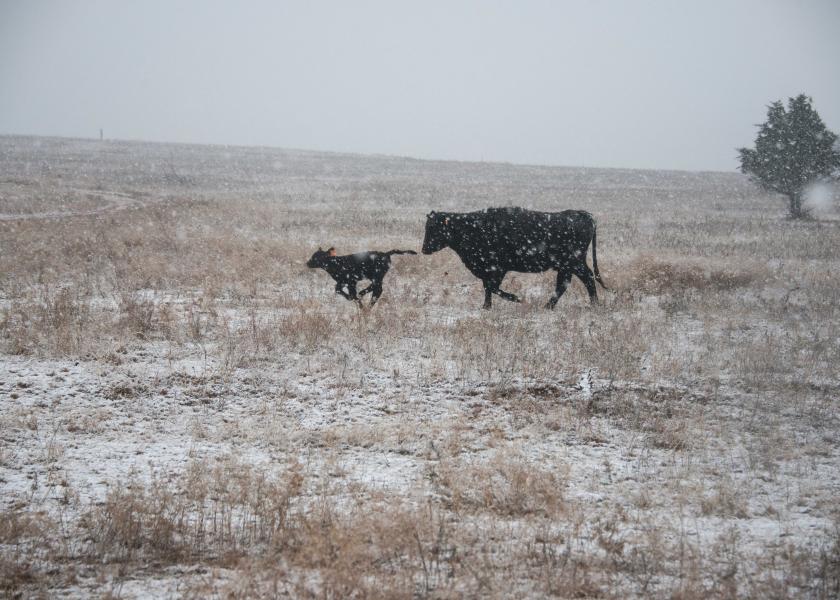Managing Cows and Calves During Weather Swings

Colostrum intake is key to calf health, especially during weather swings
The aftermath of February’s whirlwind weather might be behind us but managing calves through temperature swings in the weeks to come actually begins long before birth.
“It all starts with making sure the dam is in proper body condition,” explains Dr. Jeff Sarchet, beef technical services veterinarian with Zoetis.
Sarchet says cows should calve at a body condition score (BCS) of 5 to 5.5, while heifers should calve at BCS 6 to help ensure colostrum production is adequate when the calf is born.
Colostrum intake after birth is key to maintaining calf health through weather stress.
According to Dr. Gerald Stokka, North Dakota State University extension veterinarian and livestock stewardship specialist, calves born in frigid weather need colostrum more than anything.
“That colostrum is energy and protein and vitamins that allow the calf to survive,” Stokka explains.
Calves born during the extreme cold that are not properly taken care of by their mother are more susceptible to illness, especially when temperatures exhibit wide fluctuations, he says.
“Temperature environmental stress can be a trigger that pushes the calf over into developing respiratory disease, especially a calf that didn’t get up to nurse right away,” Stokka says.
Healthy Cows First
Pre-calving nutrition or fetal programming, as it is often called can have lasting effects on calf performance. According to Stokka, cows that have been fed proper amounts of energy, protein and minerals, in general, will produce higher quality colostrum.
“If you have cows that are too thin or have been short on energy or protein, the quality and volume of colostrum may be compromised,” Stokka explains. “That will have a dramatic impact on the health of that calf.”
Cows should calve quickly and begin caring for the calf immediately after birth, Stokka says. Adequate colostrum intake at birth helps calves navigate through environmental stress and puts them on a successful path of performance later in life.
“We’re finding out there’s a lot more to the colostrum than just the antibodies,” Sarchet says. “We’ve found that calves that don’t nurse or don’t get their full amount of colostrum actually perform worse in the stocker and feedlot phase. They will gain less, and they will take more feed to convert a pound of feed to a pound of meat.”
Develop a Plan
While cow nutrition is the foundation for long-term calf health, an overall herd management plan helps build optimal production in a cow/calf operation.
“You’ve got to manage your cow herd all year long for optimal production and health,” Sarchet says. “You need a good herd health program that includes vaccinations and deworming.”
He recommends working with a veterinarian to establish a plan to protect the cow and her calf when it’s born.
Stokka agrees that managing calves through weather extremes is a combination of herd vaccinations, nutrition, genetic selection and even removing environmental stressors that can occur. For example, shifting to a later calving season can be beneficial for some producers.
“It’s a big picture systems approach,” he says.







